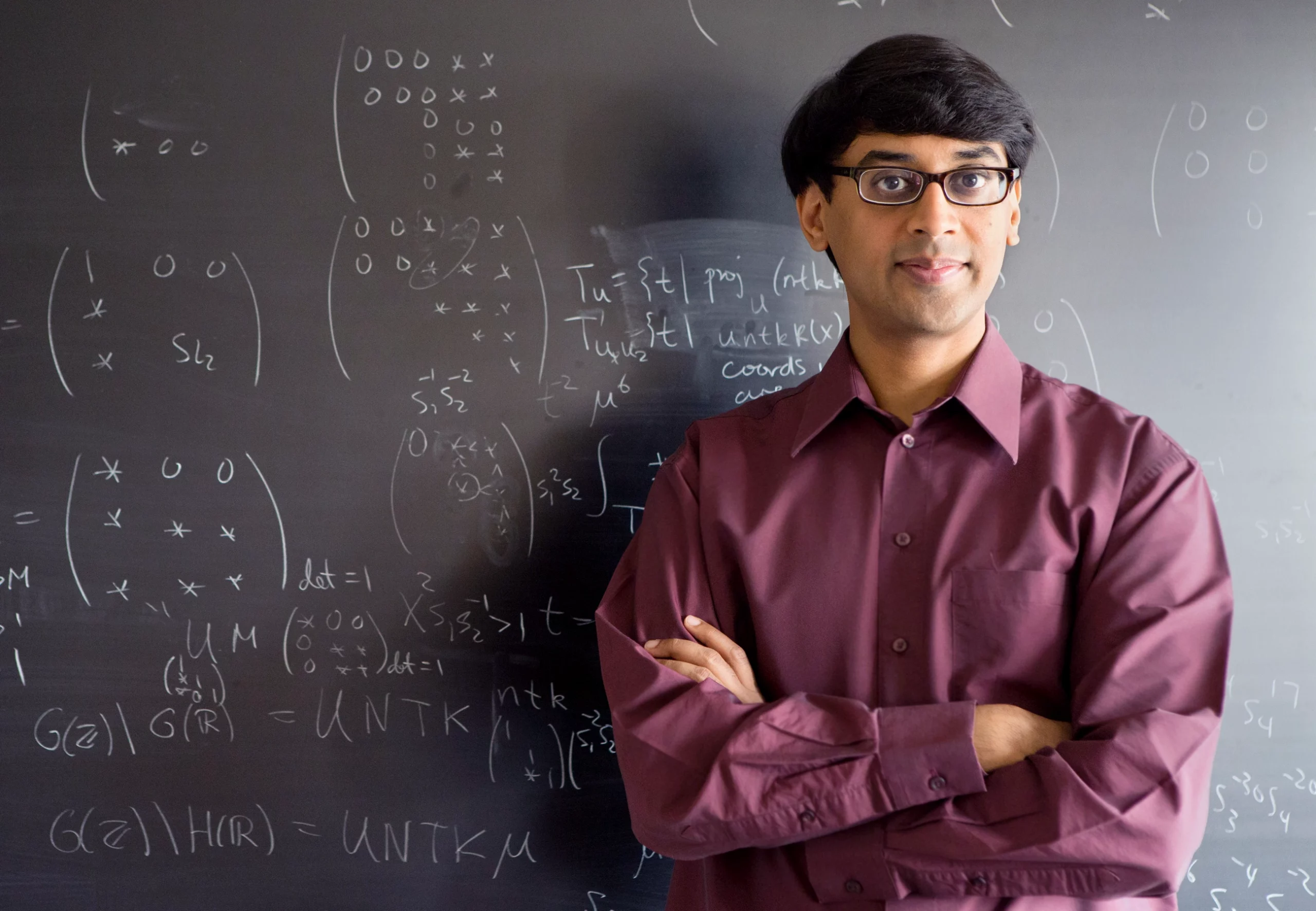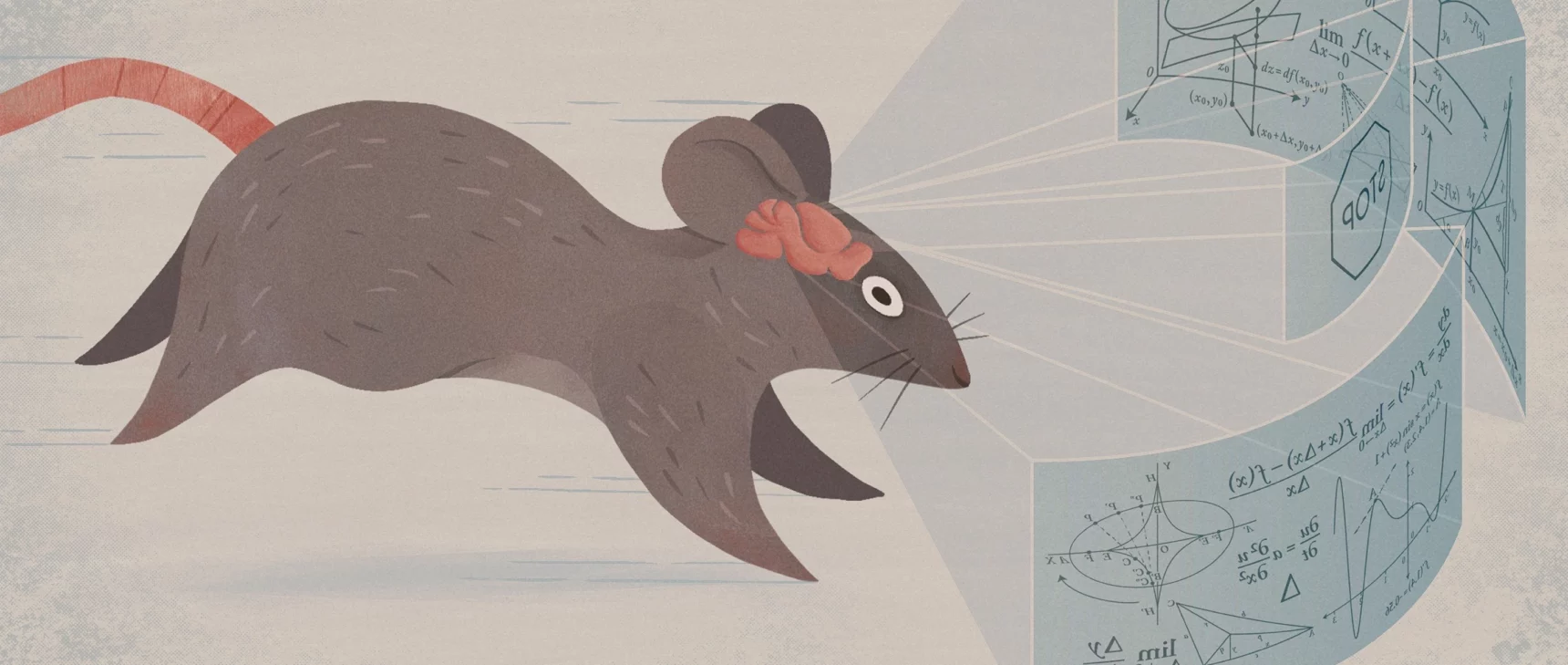Mathematical Trio Advances Centuries-Old Number Theory Problem

Sally Caulwell for Quanta Magazine
Introduction
Earlier this year, a trio of mathematicians decided to make lemons into lemonade — and ended up making major headway on a problem that mathematicians have been thinking about for centuries.
The three were just finishing a project and thinking about next steps when, late in March, two of them — Levent Alpöge of Harvard University and Ari Shnidman of the Hebrew University of Jerusalem — contracted Covid-19, separately but nearly simultaneously. Many people would take a break under such circumstances, but the third team member, Manjul Bhargava of Princeton University, proposed the opposite. Ramping up their weekly Zoom meetings to three or four times a week, he suggested, might distract his ailing collaborators from their symptoms. Quarantine, the three decided, could be an opportunity to think undisturbed.
During these meetings, they considered one of the oldest questions in number theory: How many integers can be written as the sum of two cubed fractions, or, as mathematicians call them, rational numbers? The number 6, for example, can be written as (17/21)3 + (37/21)3, while 13 = (7/3)3+(2/3)3.
Mathematicians have suspected for decades that half of all integers can be written this way. Just as with odd and even numbers, this property appears to divide whole numbers into two equal camps: those that are the sum of two cubes, and those that aren’t.
But nobody was able to prove this, or even give any bound on the proportion of whole numbers that fall into each camp. As far as mathematicians knew, the camp consisting of sums of rational cubes might be vanishingly small — or it might contain nearly every whole number. Mathematicians have calculated that, if something called the Birch and Swinnerton-Dyer conjecture is true (as is widely believed), about 59% of numbers up to 10 million are the sum of two rational cubes. But such data can, at best, offer hints about how the rest of the number line might behave.
Numbers in blue can be written as the sum of two cubed rational numbers; the others cannot. Mathematicians believe — but have not proved — that half of all integers fall into each camp.
Merrill Sherman/Quanta Magazine
Unlike the odd and even numbers, “these two camps are subtle,” said Barry Mazur of Harvard. There’s no test for determining which numbers belong in which camp that is known to work for all numbers. Mathematicians have come up with tests that are strong candidates, but for now each has some drawback — either mathematicians can’t prove that the test will always reach a conclusion, or they can’t prove that the conclusion is correct.
The difficulty of understanding sums of cubes, and cubic equations more generally, has been “a recurring embarrassment for number theorists,” said Bhargava. He won the Fields Medal in 2014 in part for his work on rational solutions to the cubic equations known as elliptic curves, of which sums of two cubes are a special case.
Now, in a paper posted online in late October, Alpöge, Bhargava and Shnidman have shown that at least 2/21 (about 9.5%) and at most 5/6 (about 83%) of whole numbers can be written as the sum of two cubed fractions.
The question of sums of cubes isn’t just a curiosity. Elliptic curves have a richly intricate structure that has propelled them to the center of many areas of both pure and applied mathematics, notably enabling cryptographers to build powerful ciphers. The Birch and Swinnerton-Dyer conjecture, the central question in the field, has a $1 million bounty on its head as one of the Clay Mathematics Institute’s Millennium Prize Problems.

Manjul Bhargava won the Fields Medal in 2014 for his work on elliptic curves, of which the sum-of-cubes problem is a special case.
Denise Applewhite
The new work builds on a set of tools Bhargava has developed over the past 20 years, along with collaborators, to explore the full family of elliptic curves. Understanding sums of two cubes means analyzing a much smaller family, and “the smaller the family, the harder the problem,” said Peter Sarnak of the Institute for Advanced Study in Princeton.
This particular family seemed “way out of reach,” Sarnak added. “I would have said, ‘That looks too hard, way too hard.’”
A Phase Transition
In contrast with sums of cubed fractions, which seem to be plentiful, hardly any integers are the sum of two squared fractions. By the early 1600s, the mathematicians Albert Girard and Pierre de Fermat had figured out a simple test for determining which whole numbers are the sum of two squares: Factor your number into primes, then check the exponent of each prime that has a remainder of 3 when you divide it by 4. If those exponents are all even, your number is the sum of two squared fractions; otherwise, it’s not. For example, 490 factors into 21 × 51 × 72. The only one of these factors that has a remainder of 3 when you divide by 4 is 7, and 7 has an even exponent. Therefore, 490 is the sum of two squares (for the curious, it equals 72 + 212).
The vast majority of numbers fail the even-exponent test. If you pick a whole number at random, the probability that it is the sum of two squared fractions is essentially zero. Mathematicians believe that the same is true for sums of two fractions raised to the fourth power, or the fifth power, or any power higher than three. It’s only with the sums of cubes that there is suddenly an abundance.
Mathematicians are used to cubic equations behaving differently from those of all other powers. Among equations made of two variables (like the sum-of-two-cubes equations), the equations whose highest exponent is 1 or 2 tend to be well understood — typically they have either no rational solutions or infinitely many, and it’s generally straightforward to tell which. Meanwhile, the equations whose highest exponent is 4 or higher generally have only a finite sprinkling of rational solutions.
Cubic equations, by contrast, can have finitely many solutions, infinitely many or none at all. These equations represent a sort of phase transition between the exponents below 3 and the ones above, displaying phenomena that are never seen in these other settings. “Cubes are different in every respect,” Mazur said.
Unlike equations with lower exponents, cubes are startlingly difficult to fathom. There’s no overarching method for finding or even counting the rational solutions to cubics that’s been proved to always work.
“Even with all the computing power that we have, if you give me an elliptic curve with very big coefficients, I don’t necessarily know how many rational solutions it has,” said Wei Ho, a former student of Bhargava’s who is currently a visiting professor at the Institute for Advanced Study.
In the sum-of-two-cubes problem, the fractions involved can be enormous: The number 2,803, for example, is the sum of two cubed fractions whose denominators each have 40 digits. And once we’re looking at numbers in the millions, Bhargava said, many of the fractions “would involve more digits than could fit on all the paper in this world.”
Mapping Matrices
Because elliptic curves are so ungovernable, number theorists look for ways to link them with more tractable objects. This April, while Alpöge and Shnidman were fighting Covid, they and Bhargava built on work the latter had previously done with Ho and figured out that whenever a sum-of-cubes equation has rational solutions, there’s a way to build at least one special 2 × 2 × 2 × 2 matrix — a four-dimensional analogue of the more familiar two-dimensional matrix. “We started laying out a plan to count these 2 × 2 × 2 × 2 matrices,” the three wrote.
To do so, the team drew on two classical subjects that have each been studied for more than a century. One is the “geometry of numbers,” which involves how to count lattice points inside different geometric shapes. This topic has been enjoying a renaissance in the field of elliptic curves over the past 20 years, due in large part to the work of Bhargava and collaborators.
The other technique, known as the circle method, originated in the work of the legendary Indian mathematician Srinivasa Ramanujan and his longtime collaborator G.H. Hardy in the early 20th century. “This is the first major application of combining the circle method with these geometry-of-numbers techniques,” Ho said. “That part is very cool.”
Using these methods, the trio was able to show that for at least 1/6 of all whole numbers, no 2 × 2 × 2 × 2 matrix exists. That means that for those numbers, the sum-of-cubes equation has no rational solutions. So no more than 5/6 of integers, or about 83%, can be the sum of cubes of two fractions.

Levent Alpöge is a junior fellow at Harvard University’s Society of Fellows.
Archives of the Mathematisches Forschungsinstitut Oberwolfach
In the reverse direction, they found that at least 5/12 of all whole numbers have exactly one matching matrix. It’s tempting to conclude that these numbers are the sum of two cubes, but that doesn’t automatically follow. Every number that’s the sum of two cubes has a matrix, but that doesn’t necessarily mean the converse is true: that every number with a matrix is the sum of two cubes.
Alpöge, Bhargava and Shnidman needed what elliptic curve researchers call a converse theorem — something that takes information about a cubic equation and uses it to construct rational solutions. Converse theorems form a flourishing subfield of the theory of elliptic curves, so the trio turned to two of the subfield’s expert practitioners — Ashay Burungale of the University of Texas, Austin and Christopher Skinner of Princeton. Burungale and Skinner were able to show that, at least some of the time, if a whole number has a single associated matrix, then that number must be the sum of two rational cubes. Their theorem, which essentially proves a relevant chunk of the Birch and Swinnerton-Dyer conjecture, appears in the paper as a three-page appendix, which Sarnak describes as marvelous in itself.
Burungale and Skinner didn’t prove their theorem for every whole number with exactly one matrix — they had to impose a technical condition that whittled the 5/12 subset down to 2/21, or about 9.5%, of all whole numbers. But Bhargava is optimistic that Burungale and Skinner, or other researchers in their area, will reach the rest of the 5/12 (about 41% in all) before too long. “Their techniques are steadily getting stronger,” said Bhargava.
Proving the full conjecture — that exactly half of all integers are the sum of two cubes — will require eventually tackling the set of numbers that have more than one associated matrix. This set, which Bhargava calls “very hazy,” includes both numbers that are the sum of two cubes and ones that aren’t. Handling such numbers will require completely new ideas, he said.
For now, researchers are happy to have finally settled the question for a substantial proportion of whole numbers, and are eager to probe the techniques in the proof further. “It’s one of those beautiful things: You can explain the result very easily, but the tools are very, very much at the cutting edge of number theory,” Sarnak said.



